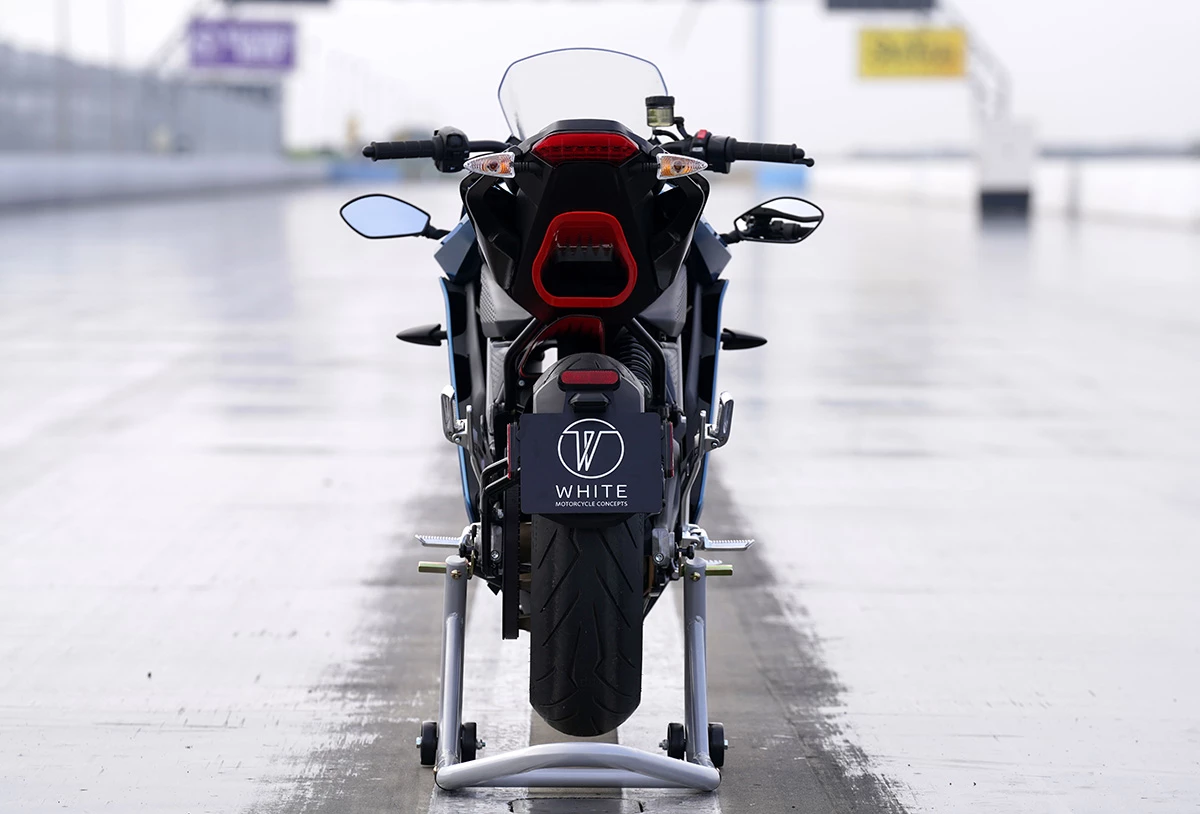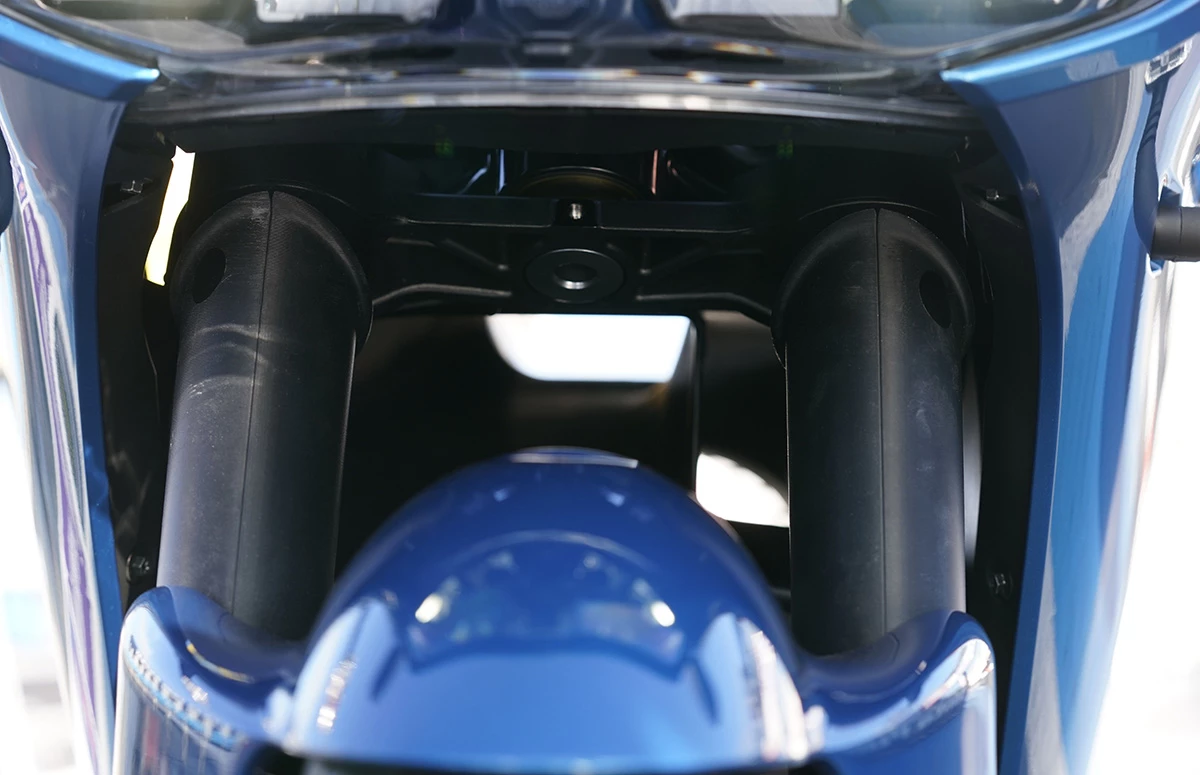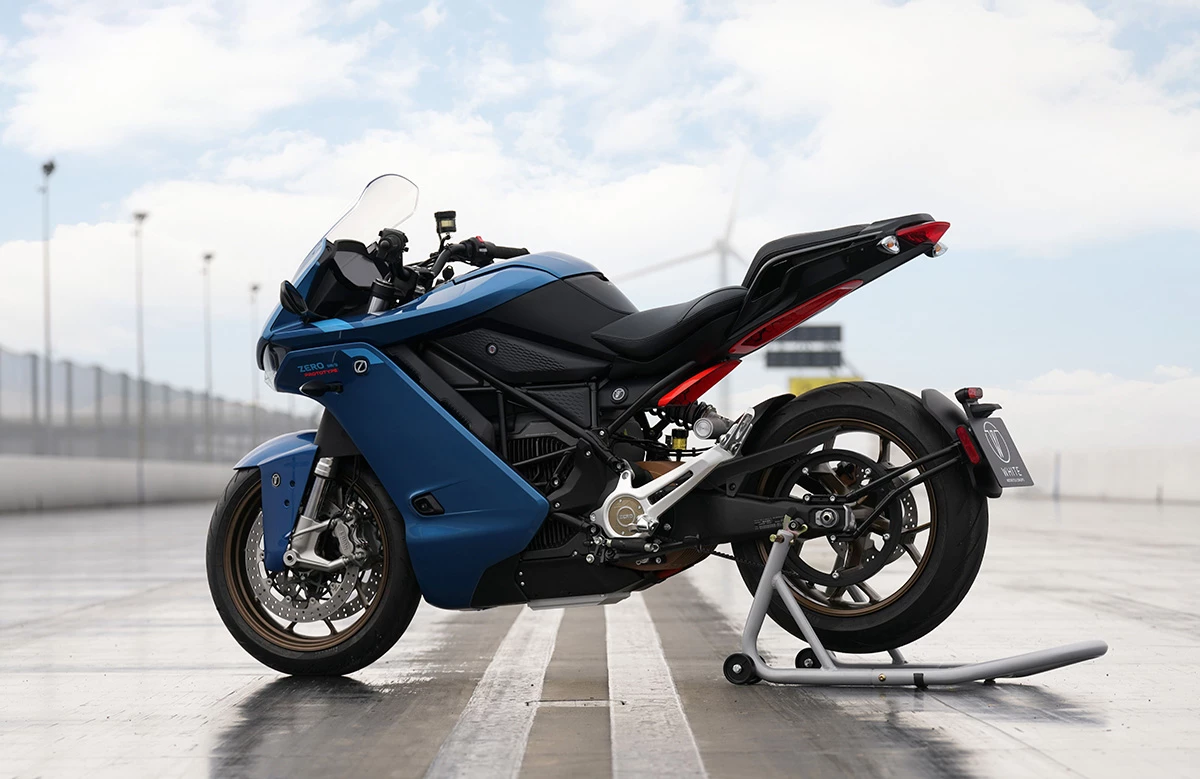UK-based R&D shop White Motorcycle Concepts (WMC) punched a gaping hole in a Zero SR/S electric motorcycle to reduce aerodynamic drag by 10%. The prototype now goes faster, and can deliver extended range at highway speeds – proving this method can serve as an effective way to increase EV efficiency.
It's not the first time WMC's tried this. The company's WMC250EV, designed around founder and rider Robert White to achieve land speed records, is designed around a massive Venturi tunnel running all through the center for a remarkable 69 percent reduction in drag. The bike should be able to hit 250 mph (402 km/h) – but we haven't seen anything from the company about that since the machine began track tests in 2021.
The same year, WMC also poked a hole in a 3-wheel hybrid police scooter prototype based on Yamaha's tilting Tricity 300. Its electric assist and aero tunnel combine to cut carbon emissions by up to 50% compared to a conventional two-wheeler.
Now, WMC has teamed up with Zero Motorcycles to see how much extra range can be squeezed out of an electric streetbike with a big hole in it. The fully faired, US$21,000 Zero SR/S achieves a decent 124 mph (200 km/h), and can manage 171 miles (275 km) on a single charge as standard.
"When I first saw the Zero SR/S frame and battery architecture, I immediately recognized the opportunity to retrofit a duct," said White. And that's exactly what WMC did on what it's dubbed the WMCSRS concept.
The company installed a custom vertically bifurcated aerodynamic duct running directly through the center of the bike, to channel air in from behind the front wheel and out above the rear wheel. A bespoke front fender and fork shroud improve airflow through the duct.
It's unclear whether any battery capacity was sacrificed to free up space in this instance, but WMC tells us the modifications reduce the SR/S's drag coefficient by a full 10%.

According to WMC, this could be an inexpensive way to boost range without having to wait for improvements in battery tech. The duct is relatively affordable to manufacture and integrate into bikes, and can also help boost top speed as well as acceleration.
WMC hasn't mentioned exactly how much of an increase in range you'll get with its patented duct. There's a rule of thumb going around that suggests a 10% reduction in drag coefficient will net you something like a 5% improvement in range.
In the SR/S's case, that would theoretically take it from 171 miles (275 km) to 180 miles (290 km). That's not a huge boost, but hey, I'll take every chance to avoid topping off a battery on the road that I can get.

Mind you, this rule of thumb ignores a lot of the complexities around aerodynamics. As Amateur Aerodynamics points out, reality is a lot more complex.
One key point is that the overall drag working against a motorcycle varies with the square of speed – so reducing the drag coefficient of the bike doesn't do much at all if you're bimbling around the back streets at 25 mph (40 km/h). But once you're doing highway speeds or higher, the efficiency gains start stacking up.
Electric motorcycles are already extremely efficient in stop/start urban traffic. Highway speed is where your battery percentage really starts to take a beating, so drag-reduction ideas like this could potentially make a bigger impact than the above rule of thumb might suggest.

There's no word as yet on whether this 'big hole' retrofit is going to be worked up into an aftermarket option for Zero owners, or whether Zero plans to roll it in as a factory option. But it's definitely something WMC is looking to license to motorcycle companies.
If the numbers add up, we might see more bikes across brands adopt central ducts soon enough.
Source: WMC







